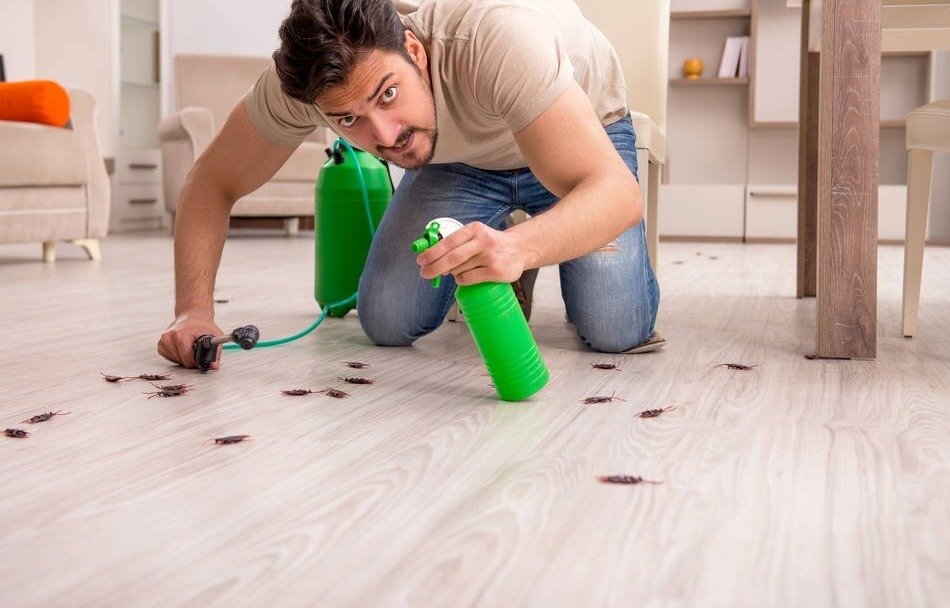Do It Yourself Pest Control: A Comprehensive Guide to Managing Pests and Lawn Care
Introduction

In the realm of home maintenance and property management, one common concern that homeowners often face is american pest control. Unwanted invaders such as insects, rodents, and other pests can quickly become a nuisance, causing damage to property and posing health risks. While professional pest control services are readily available, a growing number of homeowners are exploring the option of taking matters into their own hands through DIY pest control methods. In this extensive guide, we will delve into the world of do-it-yourself pest control, exploring the various aspects, benefits, and challenges associated with managing pests and maintaining a healthy lawn on your own.
Can I Do My Own Pest Control?
Understanding the Basics
The idea of do-it-yourself las vegas pest control might seem daunting to some homeowners, but with the right knowledge and tools, it can be a feasible and cost-effective solution. The first step is to understand the basics of las vegas pest control. This includes identifying common pests, recognizing signs of infestations, and learning about the life cycles and habits of different pests. Armed with this knowledge, homeowners can make informed decisions about the most effective methods to employ for their specific pest problems.
Benefits of DIY Pest Control
Cost Savings
One of the primary advantages of opting for do-it-yourself pest control is the potential for significant cost savings. Professional pest control las vegas services often come with a hefty price tag, especially for recurring treatments. By taking on the task yourself, you can purchase the necessary supplies at a fraction of the cost and apply them as needed, potentially saving hundreds or even thousands of dollars over time.
Timely Intervention
DIY pest control in las vegas allows homeowners to address pest issues promptly. Waiting for a scheduled appointment with a pest control professional could result in the problem worsening. With the ability to take immediate action, homeowners can prevent pests from causing further damage to their property.
Customization
Every home is unique, and pest problems can vary widely. DIY pest control empowers homeowners to tailor their approach to the specific needs of their property. This customization ensures that the chosen methods are not only effective but also considerate of factors such as the type of pests present, the size of the infestation, and the layout of the home.
Assessing Your Capability
While DIY pest control offers various benefits, it’s essential to realistically assess your capability and comfort level with taking on such tasks. Some pest issues, especially large or persistent infestations, may require professional expertise. Understanding the limitations of your knowledge and equipment is crucial to achieving successful results without putting your property or well-being at risk.
Do It Yourself Pest Control & Lawn Care
Integrated Pest Management (IPM)
Integrated Pest Management (IPM) is a holistic approach to pest control that combines various strategies to minimize the use of pesticides. This method emphasizes prevention, monitoring, and control to create a comprehensive and sustainable pest management plan. Homeowners engaged in DIY pest control can benefit from adopting an IPM approach, which often involves cultural, biological, and mechanical control methods in addition to chemical treatments.
Pest Identification and Monitoring
The first step in any effective pest control strategy is accurately identifying the pests present. This requires regular monitoring of your property to spot signs of infestations. DIY pest control enthusiasts can use a variety of tools, such as traps, insect monitors, and visual inspections, to identify the types of pests they are dealing with. Once identified, homeowners can then research and implement targeted control measures.
Choosing the Right Products
An essential aspect of do-it-yourself pest control is selecting the right products for the job. With a plethora of pesticides and repellents available in the market, it’s crucial to choose products that are not only effective but also safe for the environment, pets, and family members. Understanding the active ingredients, application methods, and potential side effects of the chosen products is key to achieving the desired results without causing unintended harm.
Common DIY Pest Control Methods
Natural and Homemade Remedies
For homeowners who prefer environmentally friendly options, natural and homemade remedies can be effective in certain situations. Ingredients such as neem oil, diatomaceous earth, and vinegar are known for their pest-repelling properties. DIY enthusiasts can experiment with these alternatives to control pests without resorting to chemical solutions.
Mechanical Controls
Mechanical controls involve physically preventing pests from entering or causing damage to your property. This can include the use of traps, barriers, and exclusion methods. Traps can be particularly effective for capturing and removing individual pests, while barriers, such as screens or caulking, can prevent pests from entering the home.
Chemical Treatments
For more severe pest problems, chemical treatments may be necessary. DIY pest control options include insecticides, herbicides, and rodenticides that are available in various formulations, including sprays, baits, and granules. It’s essential to follow the manufacturer’s instructions carefully and take necessary precautions when using chemical treatments.
Lawn Care in DIY Pest Control
Maintaining a healthy lawn is integral to effective pest control. A well-kept lawn not only enhances the aesthetics of your property but also creates an environment that is less conducive to pests. DIY lawn care involves practices such as regular mowing, proper watering, and soil management. These practices not only promote a lush and vibrant lawn but also contribute to the prevention of pest infestations.
Mowing and Trimming
Regular mowing and trimming are fundamental aspects of lawn care. Keeping the grass at an optimal height prevents the development of hiding places for pests and encourages a healthy, resilient lawn. Additionally, trimmed vegetation reduces the likelihood of pests finding suitable habitats and breeding grounds.
Watering Practices
Proper watering is essential for a healthy lawn, but it’s equally crucial for pest control. Overwatering can create conditions conducive to the development of fungi and attract pests, while underwatering can stress the grass and make it more susceptible to infestations. DIY enthusiasts should establish a consistent watering schedule based on the specific needs of their lawn and local climate.
Soil Management
The condition of the soil plays a significant role in lawn health. DIY lawn care includes soil testing to determine nutrient levels and pH. Based on the results, homeowners can apply fertilizers and amendments to create an optimal growing environment for grass while making it less favorable for pests.
Challenges and Considerations
Safety Concerns
While DIY pest control offers cost savings and convenience, it comes with its own set of challenges and considerations. Safety should be a top priority, especially when dealing with chemical treatments. Homeowners must adhere to safety guidelines provided by product manufacturers, use personal protective equipment (PPE), and ensure that pets and family members are kept away from treated areas until it is safe.
Effectiveness
The effectiveness of DIY pest control methods can vary depending on the type and severity of the infestation. Some pests may be more challenging to control without professional intervention. Homeowners should be realistic about their capabilities and seek professional help when needed to prevent ongoing issues.
Environmental Impact
Choosing environmentally friendly pest control methods is increasingly important. Some chemical treatments can have adverse effects on the environment, including soil and water contamination. DIY enthusiasts should prioritize products with lower environmental impact and follow proper disposal practices for used containers and leftover chemicals.
Legal Considerations
Before embarking on a DIY pest control journey, homeowners should familiarize themselves with local regulations and restrictions regarding the use of certain pesticides. Some products may be restricted or require a license for application. Failure to comply with local laws can result in fines and other legal consequences.
Conclusion
In conclusion, do-it-yourself pest control can be a rewarding and cost-effective solution for homeowners looking to manage pests and maintain a healthy lawn. Armed with knowledge about pest identification, monitoring techniques, and a variety of control methods, DIY enthusiasts can create a customized approach tailored to the specific needs of their property. However, it’s crucial to recognize the limitations of DIY methods and seek professional help when faced with challenging or persistent pest problems. By adopting a holistic approach that includes integrated pest management and proper lawn care practices, homeowners can enjoy a pest-free and thriving living environment while minimizing the environmental impact of their efforts.
